1.Purpose of disassembly
In order to help the customers know the quality of ZHAOXIAN ZXL213 digital price tags, ZHAOXIAN’s engineers selected a ZXL213 digital price tag and prepared to dismantle it, so that the customers could see the real internal structure of the ZXL213 digital price tag.

The purpose of ZXL213 digital price tag is to be used in supermarket shelves, unmanned vending cabinets, warehouse shelves and other places to display the price of goods, parameters, codes and other information.
Previously, merchandise price tags were handwritten on paper, like the one below, which is still in use in many supermarkets or shopping malls.
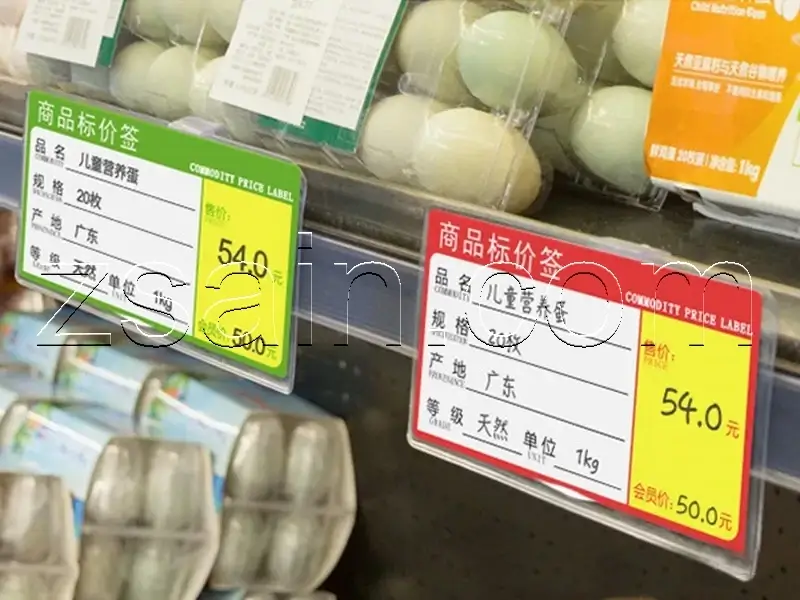
What is the biggest problem of the traditional paper handwritten price tag? Nowadays, the price of supermarket goods is changing all the time, the manual handwritten price tag operation process is very slow, resulting in the price of goods when you buy the order and add the shopping cart when the price of goods is not the same, which will cause misunderstanding of the customer.
sometimes, manual handwritten price tag operation may also have errors, then the misunderstanding will be even greater. Moreover, handwritten price tags do not have QR code or barcode, which is not convenient for scanning and management.
2.Appearance of ZXL213 digital price tag
The digital price tag like the ZXL213 are operated remotely through a base station to update information such as product prices. And it is powered by button cell batteries and does not require any connecting wires.
Digital price tag are available in monochrome or color. ZXL213 is a color display.
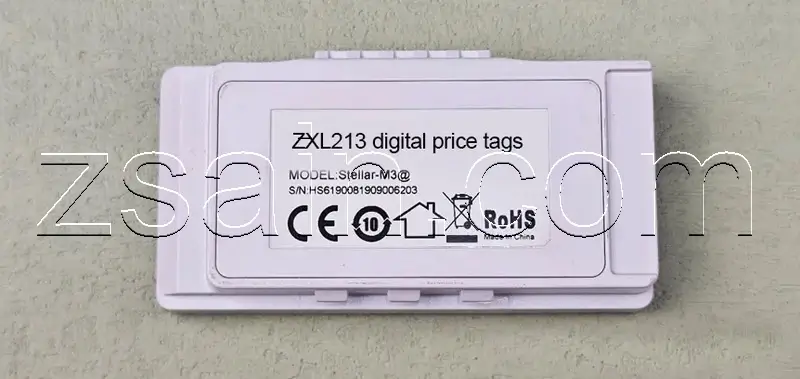
The display size of the ZXL213 digital price tag is 2.13 inches. You can see that the S/N of this digital price tag selected by the engineer is ZX6194081309106206. Since a supermarket has a very large number of digital price tags, a base station needs to update the data of a number of digital price tags, which requires that each digital price tag should be able to be accessed independently,
There is no button for this module or anything else, so this S/N should be the only one to be used for identification and access, which is the identification number of this digital price tag. So this S/N should be unique to identify and access, which is the ID number of this digital price tag.
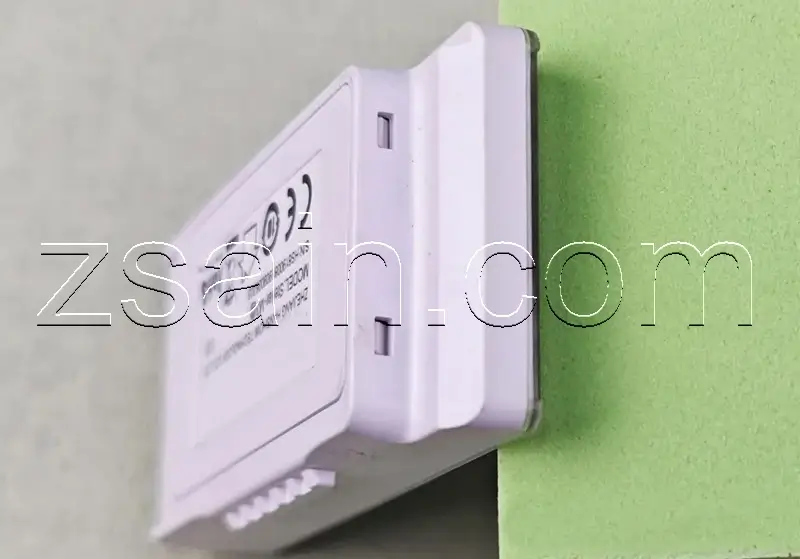
There are two snaps on the side of the back cover of the ZXL213 digital price tag, this should be where it opens, I gently poked the two snaps with a one-pronged screwdriver, and it was easy to get the back cover off.
3.Internal of ZXL213 digital price tag
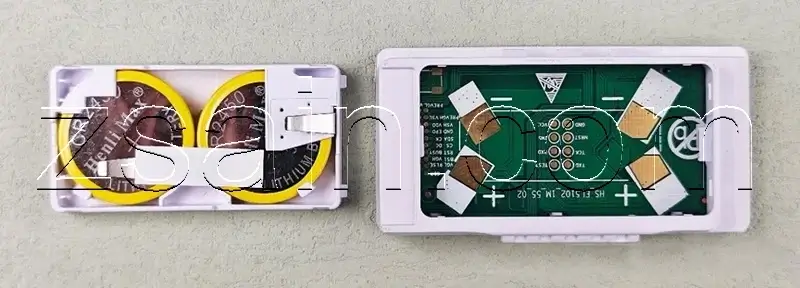
The ZXL213 has two CR2450 batteries installed inside, and the green circuit board looks good quality.

After looking around, I realized that the circuit board is larger than the opening in the back case, so the board may have to be taken out of the front. So the front panel was gouged off. Next it was easy to get the circuit board and e-ink ink screen out.

4.Circuit board for ZXL213 digital price tag
We can see that the E-ink screen is connected to the PFC base of the circuit board via the FPC flexible cable. The E-ink screen has a soft white silicone cushion over it. The green circuit board looks beautiful workmanship, then remove the ink screen, check the production quality of the circuit board.
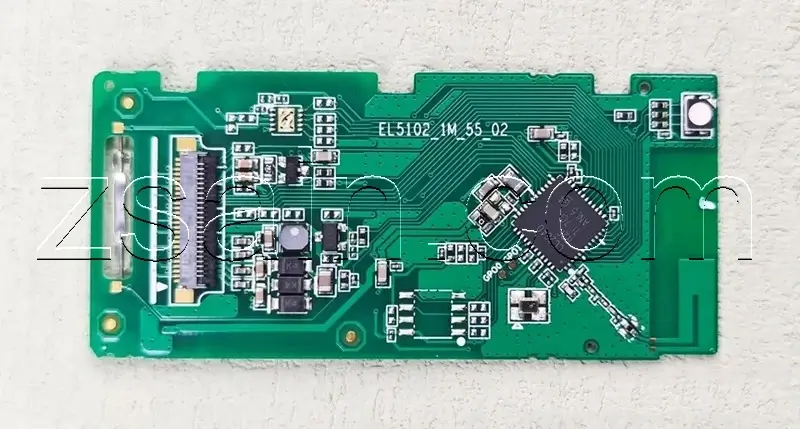
The circuit board is rather simple but looks pretty neat. There is only one IC on the circuit and the package is QFN-48. The model number of this chip is CC2640R2FRGZR, and obviously this is the Ti’s wireless chip, an Arm Cortex-M3 core with integrated low power Bluetooth 5.1 and 2.4G RF transceiver.
We can see a PCB antenna on the right side of the board. The crystal underneath the chip is more interesting, a 2016 crystal is soldered on the pad of the 3225. Near the lower edge of the board there is a SOP-8 pad is not soldered, look at the pin distribution and alignment, it should be a reserved pad for the SPI Flash chip. The left half of the board is the ink screen driver circuit.

There aren’t many devices on the back of the board, but the test points for the CC2640’s SWD burn-in and UART debug interfaces are clearly labeled, as well as a pinout description for the FPC flex cable. The other is four relatively large pads for contacting the battery shrapnel. There is a connector in the lower right corner of the board is not labeled, see the labeled positive and negative, it is possible that the battery interface.
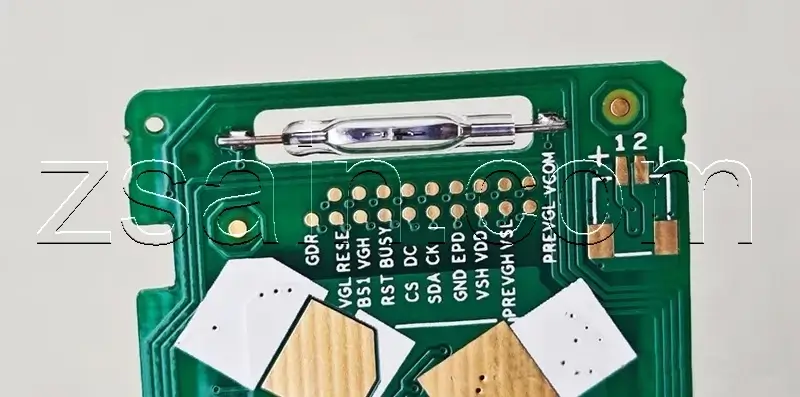
What’s odd about this board is that there is a glass encapsulated tube on the right side, not sure if it is a fuse.

This is all the parts that were disassembled for the ZXL213 digital price tag, Our engineers have taken apart another digital price tag before, but the difference between the board and the ZXL213 is more significant.
5.Comparison of two electronic price tags
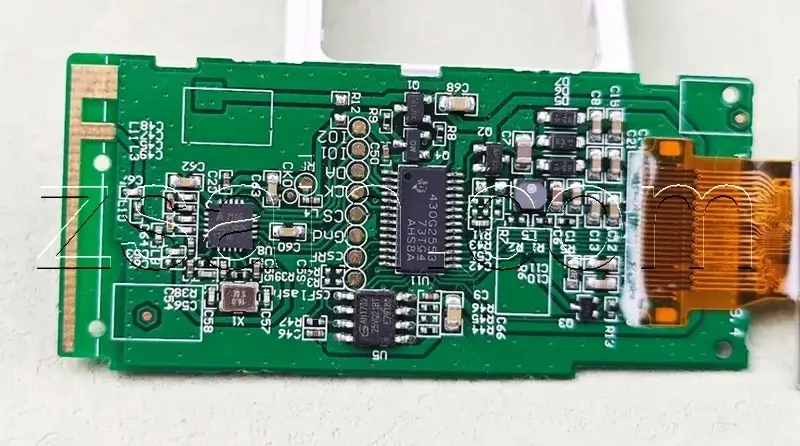
This is a previously disassembled digital price tag, the chip used in it is Ti’s MSP430G2553, the 2.4G RF chip is A7106. this chip should be the same family as the A7105, which is often used in receivers. The U5 on the board is the GD25VQ21BTIG from Mega Ease Innovation.
Comparison of the two boards can be found, one is MSP430G2553 as the MCU, external A7106 as the 2.4G RF transceiver, to complete the wireless reception of data, and refresh the screen data. The other is the use of a built-in MCU and 2.4G RF chip SOC chip to achieve a higher degree of integration. Since the power consumption of the e-ink screen is very low and the display can be maintained without power, it is suitable for use in supermarkets, shopping malls, and other places where there are a lot of commodities
 Professional anti-theft &lable&tag provider
Professional anti-theft &lable&tag provider
